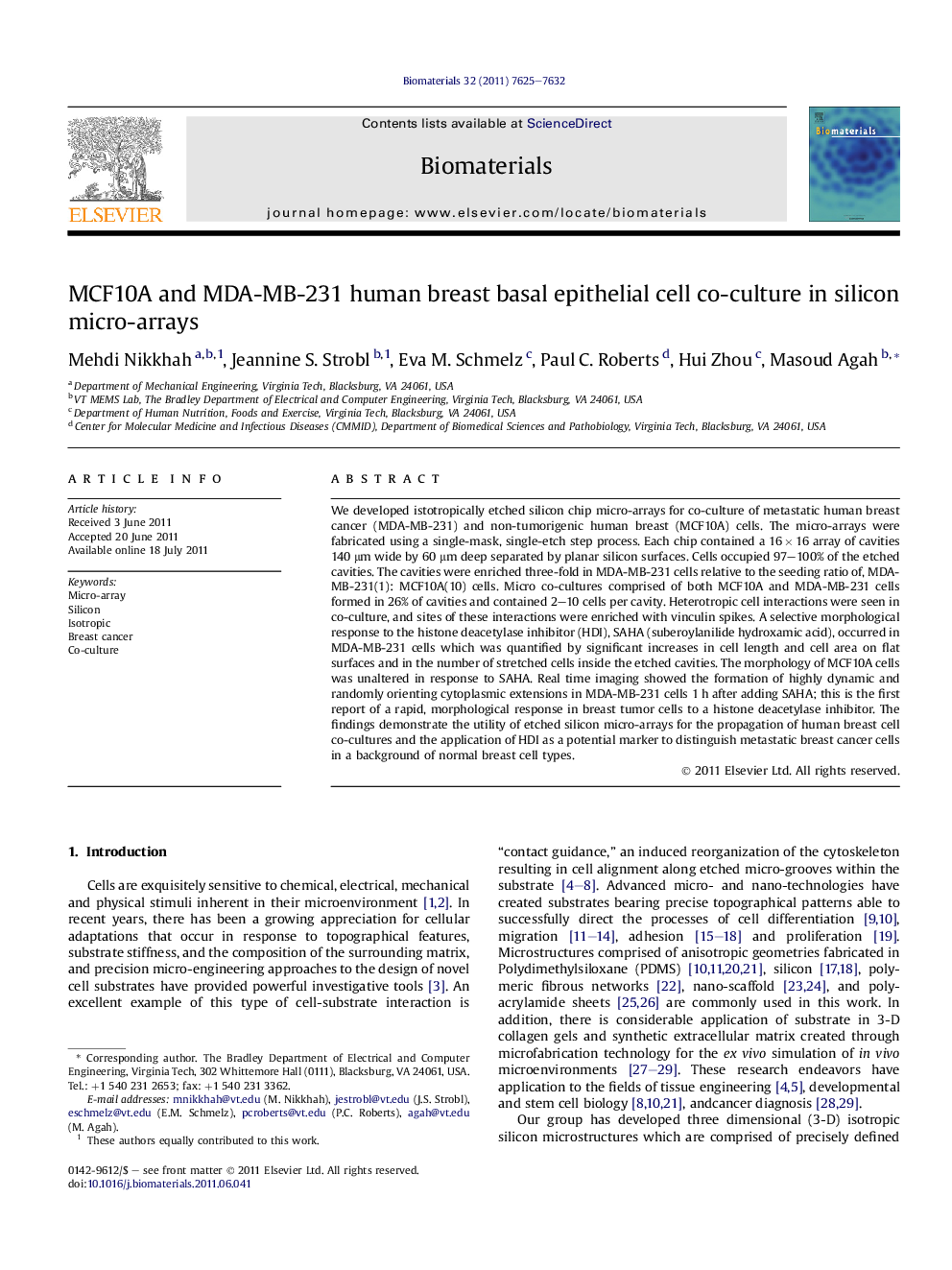| Article ID | Journal | Published Year | Pages | File Type |
|---|---|---|---|---|
| 10229753 | Biomaterials | 2011 | 8 Pages |
Abstract
We developed istotropically etched silicon chip micro-arrays for co-culture of metastatic human breast cancer (MDA-MB-231) and non-tumorigenic human breast (MCF10A) cells. The micro-arrays were fabricated using a single-mask, single-etch step process. Each chip contained a 16 Ã 16 array of cavities 140 μm wide by 60 μm deep separated by planar silicon surfaces. Cells occupied 97-100% of the etched cavities. The cavities were enriched three-fold in MDA-MB-231 cells relative to the seeding ratio of, MDA-MB-231(1): MCF10A(10) cells. Micro co-cultures comprised of both MCF10A and MDA-MB-231 cells formed in 26% of cavities and contained 2-10 cells per cavity. Heterotropic cell interactions were seen in co-culture, and sites of these interactions were enriched with vinculin spikes. A selective morphological response to the histone deacetylase inhibitor (HDI), SAHA (suberoylanilide hydroxamic acid), occurred in MDA-MB-231 cells which was quantified by significant increases in cell length and cell area on flat surfaces and in the number of stretched cells inside the etched cavities. The morphology of MCF10A cells was unaltered in response to SAHA. Real time imaging showed the formation of highly dynamic and randomly orienting cytoplasmic extensions in MDA-MB-231 cells 1 h after adding SAHA; this is the first report of a rapid, morphological response in breast tumor cells to a histone deacetylase inhibitor. The findings demonstrate the utility of etched silicon micro-arrays for the propagation of human breast cell co-cultures and the application of HDI as a potential marker to distinguish metastatic breast cancer cells in a background of normal breast cell types.
Related Topics
Physical Sciences and Engineering
Chemical Engineering
Bioengineering
Authors
Mehdi Nikkhah, Jeannine S. Strobl, Eva M. Schmelz, Paul C. Roberts, Hui Zhou, Masoud Agah,
